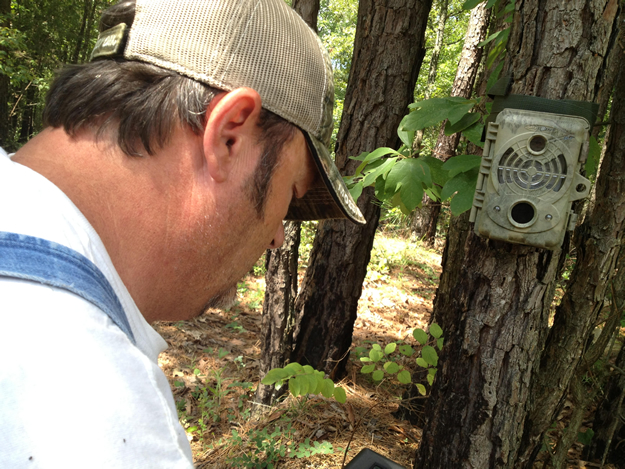
 Editor’s Note: Alex Rutledge of Birchtree, Missouri, has been a Mossy Oak Pro Staffer for the last 6 years but has been in the hunting industry as a professional hunter and TV personality for more than 20years. Today he co-hosts the “Bloodline Outdoors” TV show on the Sportsman’s Channel and the “Bloodline Outdoors” radio show. When we asked Rutledge about his favorite Mossy Oak pattern, we found a true believer. “Mossy Oak’s original Bottomland is hard to beat, but I also hunt in Break-Up, and this year I’ll be hunting in Mossy Oak Break-Up Country.”
Editor’s Note: Alex Rutledge of Birchtree, Missouri, has been a Mossy Oak Pro Staffer for the last 6 years but has been in the hunting industry as a professional hunter and TV personality for more than 20years. Today he co-hosts the “Bloodline Outdoors” TV show on the Sportsman’s Channel and the “Bloodline Outdoors” radio show. When we asked Rutledge about his favorite Mossy Oak pattern, we found a true believer. “Mossy Oak’s original Bottomland is hard to beat, but I also hunt in Break-Up, and this year I’ll be hunting in Mossy Oak Break-Up Country.”
At this writing in late July, we’re about 6 weeks out from the beginning of Missouri’s bow season. My first hunt will be in southern Missouri. I don’t go jump in a tree stand because I think I’m going to take a buck. I have a system I use that dictates when and where I hunt, and that system is primarily based on trail-camera information and visual observation. I use SpyPoint trail cameras, and they don’t lie. I have three key places where I put my trail cameras before the season: primary food sources, water sources and bedding sites. Throughout the year, deer rely on these types of habitat. I also put out cameras in different places at various times of the year. For instance in summer, I’ll place cameras over mineral licks. Generally I put my mineral licks close to my water sources because deer seem to want minerals before and after they drink water.
 I also have food sites where I plant crops for deer all year long. Not only do I want to attract deer to the property I hunt, I also want to hold deer on the property where I hunt. To hold and attract deer, the primary ingredient is sanctuary for the deer. Sure, deer can go to food, water and bedding sites after dark, but to be able to take older-age-class deer, you want them to feel as comfortable about moving in daylight hours as they do moving after dark. The only way to accomplish this goal is to make some hunting sites into sanctuaries with little or no human traffic, especially during deer season. If an older-age-class buck discovers a place where he doesn’t have any hunting pressure but does have plenty of food, water and a bedding area, then he has no reason to leave that home range.
I also have food sites where I plant crops for deer all year long. Not only do I want to attract deer to the property I hunt, I also want to hold deer on the property where I hunt. To hold and attract deer, the primary ingredient is sanctuary for the deer. Sure, deer can go to food, water and bedding sites after dark, but to be able to take older-age-class deer, you want them to feel as comfortable about moving in daylight hours as they do moving after dark. The only way to accomplish this goal is to make some hunting sites into sanctuaries with little or no human traffic, especially during deer season. If an older-age-class buck discovers a place where he doesn’t have any hunting pressure but does have plenty of food, water and a bedding area, then he has no reason to leave that home range.
 We all know that the older the buck is, generally speaking, the heavier his body weight will be, and the bigger his antlers. When I say, “You’re no better than the dirt you hunt,” I mean that you’ve got to have the soil types where you hunt that produce big bucks. You have to know there are trophy bucks living on the area you’re hunting, and you’ve got to make sure that the older-age-class bucks you’re attempting to take encounter little or no hunting pressure. Ninety-nine percent of the land I hunt is cattle farms.
We all know that the older the buck is, generally speaking, the heavier his body weight will be, and the bigger his antlers. When I say, “You’re no better than the dirt you hunt,” I mean that you’ve got to have the soil types where you hunt that produce big bucks. You have to know there are trophy bucks living on the area you’re hunting, and you’ve got to make sure that the older-age-class bucks you’re attempting to take encounter little or no hunting pressure. Ninety-nine percent of the land I hunt is cattle farms.
Tomorrow: Why Hunt Deer on Cattle Farms



























